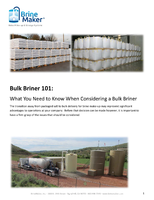Double-Disc Grinders offer minimized dressing cycle times.
Share:
Press Release Summary:
Double-disc grinding machine tools DDG450 and DDG600 are available with in-situ measurement system for in-process positioning of grinding wheel surface. System measures wheel surface during grinding process itself, even for workpieces down to 2.0 mm thick, and automatically corrects for any wheel wear. Non-contact scanning of grinding wheel surface at peripheral speeds of 30 m/sec is accurate to 5 µm and not influenced by challenges to grinding environment.
Original Press Release:
Double-Disc Grinding (DDG): New Wear Measuring System Enables Dressing Cycle Reductions of Up to 70%
PETER WOLTERS INTRODUCES NON-CONTACT MEASUREMENT SYSTEM FOR THE POSITIONING OF THE GRINDING SURFACE
RENDSBURG, Germany - Peter Wolters GmbH, a manufacturer of high-precision machine tools headquartered in Rendsburg, Germany, today announced the release of a brand-new measurement tool for in-process positioning of the grinding wheel surface on double-disc grinding systems. The unit is available for Peter Wolters' line of double-disc grinding machine tools, including the DDG450 and DDG600 models.
Peter Wolters' new high-precision in-situ measurement option for the DDG line's grinding wheel position can achieve a cost savings of up to 70% in the dressing of the grinding wheels. "With this innovation, our customers can potentially achieve an annual cost reduction of over 100,000 in the grinding process, depending on the individual grinding task", said Wolfgang Habbecke, Product Manager for Peter Wolters' Through-Feed Grinder Line.
The main advantage of the double disc grinding process is that, besides enabling the manufacturing flow-production concept, both surfaces of flat parts can be precisely ground in one step. This is achieved by guiding the work pieces into the gap of the plain surface between the two grinding wheels with a transport disc. The work pieces are placed by an operator or via automation into the pockets of the transport disc. Due to the rotational movement of the transport disc, the work pieces are guided into the grinding zone.
Grinding processes with conventional grinding wheels not only result in the desired abrasion of the work pieces, but also cause wear on the grinding wheels themselves. In order to keep the thickness tolerance of the work pieces constant, wear on the grinding wheels needs to be compensated for, which is typically achieved by a post-process measurement of the work pieces (100% control in the machine). This established measurement process, however, only provides information about the wear of both grinding wheels in total. The real wear on each grinding wheel depends on many factors; for example, the condition of the raw parts. Furthermore, the wear rate is constant during a machining cycle in only a very few cases; therefore, with post-process measurement only, it is often necessary to interrupt the grinding process and dress the grinding wheels, which leads to high production losses and thereby to additional costs.
For the very first time, Peter Wolters now provides the ability on its DDG450 and DDG600 tools to measure the wheel surface during the grinding process itself --even for work pieces with a thickness down to 2,0 mm -- and automatically correct for any wheel wear. An outstanding feature of this patent-pending system is the no-contact scanning of the grinding wheel surface at peripheral speeds of 30 m/sec, without being influenced by challenges to the grinding environment such as cooling liquids, chips and abrasives. Even under these conditions, a stable measurement of the grinding wheel position with an accuracy of 5 ìm may be achieved.
A sample test process run with the new wear measuring system on the Peter Wolters DDG tools showed the following improvements compared to the previous grinding process:
The improved capability can result in a total annual estimated savings of up to 110,000, depending on the customer's process.
In addition to this benefit, the new wear measuring system provides security in case of variations in the grinding wheel quality. In particular, variations in one grinding wheel often remain unrecognized, and can lead to low production yield. The new measuring unit will automatically react to these variations in limits, which can be set by the user, and give an advance warning of expected quality variations. In combination with Peter Wolters DataCare® (PDR-system), variations in grinding wheel qualities can be tracked and shown to the supplier of the wheel.
This new double disc grinding measuring system for the DDG product line demonstrates, once again, that Peter Wolters is the market-leader for groundbreaking, innovative solutions for lapping, grinding, polishing and deburring products for the fine-surface optimization of metal, glass, ceramics, plastics and nano-range semiconductor materials for computer chips and LED lighting.




